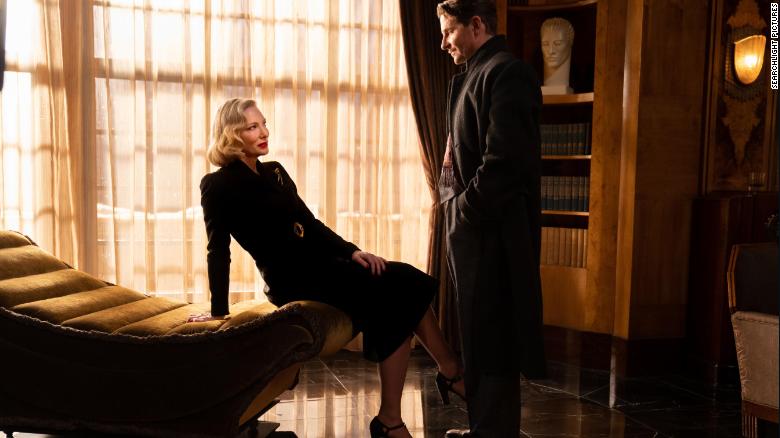Starla and David review Guillermo Del Toro’s Nightmare Alley.
Nightmare Alley Rebukes Us All by David Buckley
There’s an episode of The Sopranos where Tony’s daughter, Meadow, attempts to cheer up her manic-depressive college roommate, Caitlin, with a night out on the town. It doesn’t go well. The girls – and Meadow’s boyfriend Noah – encounter a deranged homeless woman who’s pushing a garbage-filled cart and mumbling about “the chairs, the pears, the bears” and “the social security cards.”
Despite Meadow and Noah’s protestations, the depressed Caitlin insists on offering the woman cash. Only, before Caitlin can hand it to her, the woman’s pants fall down to reveal a filthy pair of makeshift underpants fashioned out of newspaper.
The entire episode touches on the limits of human compassion – Meadow’s compassion for Caitlin; Caitlin’s compassion for the homeless woman; and, separately, Tony Soprano’s compassion for a troubled stripper who’s just about his daughter’s age.
How is it that Meadow and Noah so easily dismiss the homeless woman as a lost cause? What disorder, vice or virtue does Caitlin possess that moves her to help? Moreover, how is it that Meadow writes off the homeless woman so easily, and yet is resolute when it comes to helping her depressed roommate – who, spoiler alert, does turn out to be quite hopeless?
In other words, where do you draw the line between a fellow human being in need and a waste of effort? The Sopranos episode answers precisely none of these questions and neither does Guillermo del Toro’s new film Nightmare Alley. What del Toro does offer, however, is an origin story.
Based on William Lindsay Gresham’s horrific 1947 novel of the same name, Nightmare Alley follows Stanton Carlisle, played by Bradley Cooper. A clever and ambitious young man, Stan attempts to escape his mysterious past by taking a job as a carny.
At the carnival, Stan witnesses his first Geek Show – where a deranged, almost subhuman, performer chases a live chicken and, in a grand finale, bites the chicken’s head off.
Like Caitlin at the sight of the deranged woman, Stan reacts with pity and disgust, but also wonder – wonder at how a man could deign to perform such vulgar, animalistic feats.
That’s one question the film does answer. The Side Show’s barker, played by Willem Dafoe, explains the process step-by-step. First, you pick up a drunk (“a bottle-a-day booze fool”). You explain you lost your geek and offer him booze – with maybe a few drops of opium – to play the part temporarily. You show him how to fake it: Nick the chicken’s throat with a razor blade and pretend to drink the blood. As soon as he’s used to the arrangement, you tell him you need to find a real geek because he isn’t fooling anyone. Terrified by the thought of sobering up, he geeks for real.
At the carnival, Stan falls in love and learns the ins and outs of a mentalist act. He ends up leveraging those skills to escape the carny life and develop a polished spiritualist act – by which Stan varyingly exploits and is exploited by America’s gullible elite.
In Nightmare Alley, there are just three kinds of people: the geek, the greedy barker who exploits the geek and the voyeuristic audience who pays to see the geek just to feel better about themselves.
How many of us – in the early days of the pandemic – tuned into Netflix’s Tiger King only to gawk at the freak show starring Joe Exotic and Carole Baskin? And how many TikTok users in turn debased themselves by performing the “Carole Baskin dance” for nothing more than empty likes and follows?
To bring it down to earth, how many of us have taken a temporary job only to look back, twenty years too late, and realize we had consented to an inescapable reward system we never intended to be part of?
When you think about it, the disturbing dynamic between the barker, geek and audience plays itself out all over society – from religion and politics to entertainment, pornography and even the daily grind.
In that sense, Nightmare Alley rebukes us all. And the film attempts to paint a picture of how anyone – you, me, your doctor, boss or priest – could go from having the world and everything in it to wearing a pair of makeshift underpants fashioned out of newspaper. The journey is neither enjoyable nor easy to watch, but it’s certainly worth thinking about.

